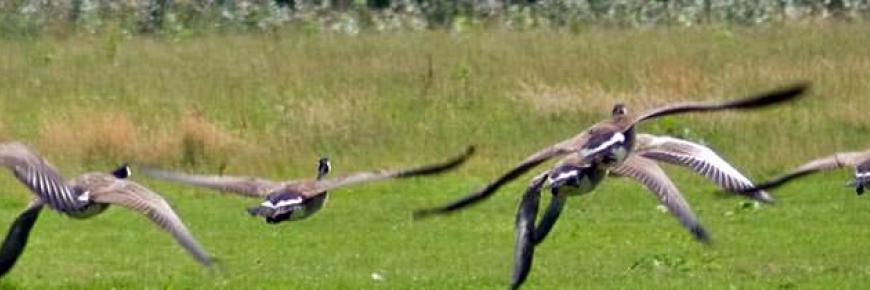Another shellfish invasive species
A common problem with many non-native species is their ability to out-compete native wildlife. And the Chinese mitten crab is another shellfish example.
This crab was first found in the Thames in 1935 and can now be found in 10 countries across Europe. It is believed the crab travelled from Asia to European waters as a stowaway in the ballast water of ships – an increasingly common pathway of spread for many marine non-native species.
Compared to our native crustaceans, the Chinese mitten crab is easily recognised as it’s the only crab to wear a pair of mittens on its claws…

This unusually accessorised crab has an unusual life cycle to match. Although born in the sea, these crabs spend the majority of their life in freshwater, only returning to the sea to reproduce. This is called a catadromous life cycle.
Adult crabs in their fourth year migrate down through the rivers to tidal estuaries where they reach sexual maturity. After mating, females carry between 250, 000 and 1, 000, 000 eggs further into deep waters. The larvae then hatch, develop and the resulting juvenile crabs gradually move upstream back to freshwater, and the life cycle begins again.
So what is crabby about this crab?
As with any introduced predator, this invasive species can upset the ecological balance within our freshwater food chains. In addition, this species has been demonstrated to have significantly negative effects on native wildlife through competition, including the UK’s threatened white-clawed crayfish (Austropotamobius pallipes).
Further out to sea, juvenile Chinese mitten crabs have been found to displace our native shore crab (Carcinus maenas) from intertidal shelters, raising concerns for the spread of this invasive species.

The Chinese mitten crab can also significantly alter its environment. As a burrowing species, areas with a high density of the Chinese mitten crab are vulnerable to flooding with the burrowing activity undermining river banks.

Finally, a common problem with invasive marine species is their impact on our aquaculture industry. The Chinese mitten crab could have serious impacts on our salmon and trout fisheries as it can predate on the eggs of both species.
If you think you’ve spotted a Chinese mitten crab let us know – it is an ALERT species for the UK, or you could submit your record on our app….
References:
Gibbey, V., Attrill, M. J & Coleman, R. A (2008). ‘Juvenile Chinese mitten crabs (Eriocheir sinensis) in the Thames estuary: distribution, movement and possible interactions with the native crab Carcinus maenas’ Biological Invasions 10: 67-77
Herborg, L-M., et al (2003). ‘Spread of the Chinese mitten crab (Eriocheir sinensis H. Milne Edwards) in Continental Europe: analysis of a historical data set.’ Hydrobiologia 503: 21-28.
Herborg, L-M., Rushton, S. P., Clare, A. S & Bentley, M. G (2005). ‘The invasion of the Chinese mitten crab (Eriocheir sinensis) in the United Kingdomand its comparison to continental Europe.’ Biological Invasions 7: 959-968.
Panning, A (1939) ‘The Chinese mitten crab.’ Report of the Board of Regents of the Smithsonian Institution (Washington) 3508: 361-375.
Rudnick, D. A., Hieb, K., Grimmer, K. F & Resh, V. H (2003). ‘Patterns and processes of biological invasion: the Chinese mitten crab in San FranciscoBay.’ Basic and Applied Ecology 4: 249-262.
Photo Credits: Chinese Mitten Crab (Ron Offermans), Shore Crab (John Haslam) and Chinese Mitten Crab Burrows (National History Museum)

